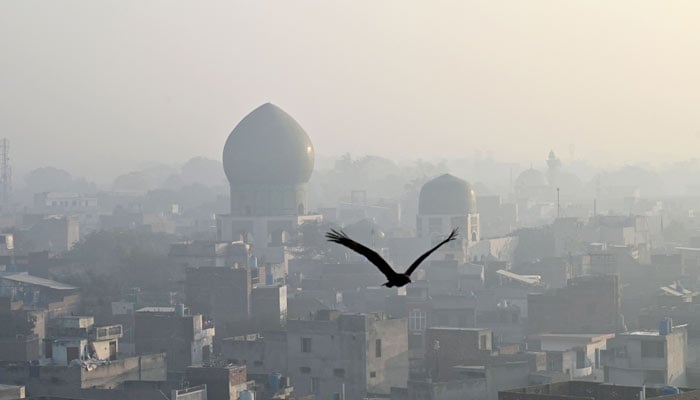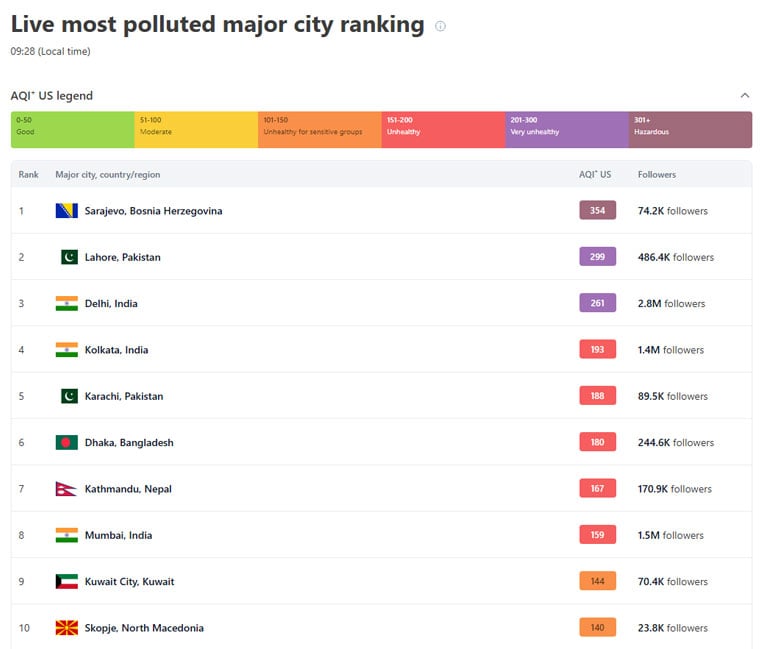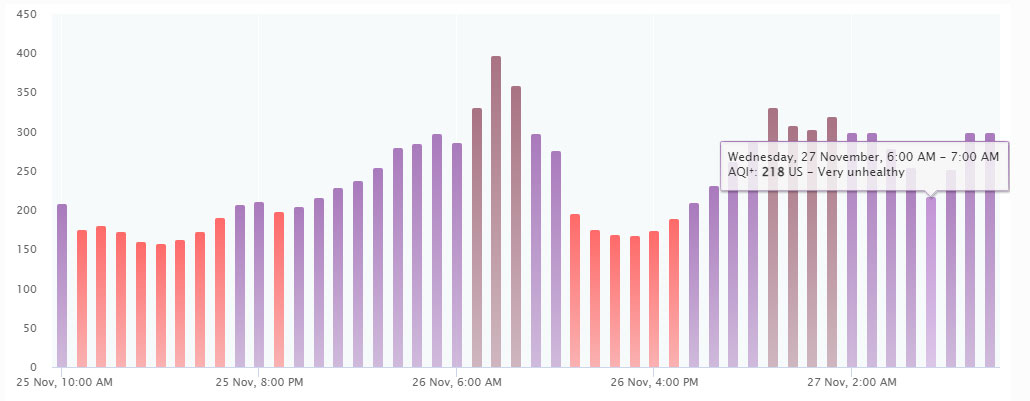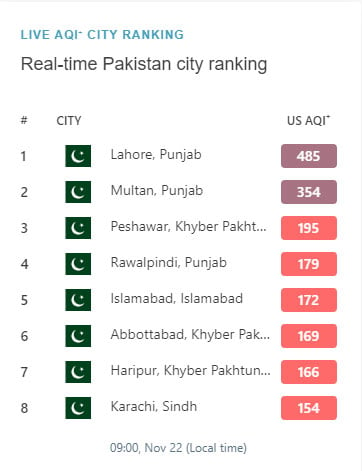
- Mitigation efforts are helping authorities reduce smog levels in Punjab.
- Karachi records the fifth worst air quality in the global pollution rankings.
- Breathing toxic air poses catastrophic risks to human health (WHO)
As Lahore continues to battle severe smog, the megacity’s air quality index (AQI) was recorded at 299 on Wednesday, just one point short of the ‘hazardous’ category.
The capital of Punjab has been hovering around the 300 mark for almost 10 days, a threshold considered dangerous for human health, according to the Swiss air quality monitoring organization, IQAir, after almost a month of recording dangerously high levels of pollutants in the atmosphere.
Today, Lahore is the second most polluted major city in the world in terms of air quality, with a concentration of PM2.5 particles – the fine particles in Lahore’s air that cause the most damage to health – 44.8 times higher than the World Health Organization (WHO) Annual Guideline Value for air quality.

Punjab, home to more than half of the country’s 240 million people, has been enveloped by a thick layer of smog for almost two months, which has also seen multiple instances of massive spikes in the AQI, marking record levels of “unprecedented” pollution in Lahore and Multan.
This prompted the provincial government to adopt lockdown-like measures in areas most affected by smog, including weeks-long school closures, a ban on entry into public spaces and time restrictions in restaurants and the markets at the beginning of the month.

These efforts have helped authorities reduce smog levels to some extent, according to data from air quality monitors.
Today, the AQI in Multan, one of the worst-hit cities, was recorded at 562, reflecting a massive improvement compared to three weeks ago, when pollution in the city reached a dangerously high AQI value high of 1,571.

The concentration of PM2.5 particles was 71.3 times higher than levels considered healthy for humans.
After Multan and Lahore, Peshawar was the third most polluted city in the country, with an AQI value of 245 at around 9 a.m. and a concentration of PM2.5 particles 34 times higher than the WHO guideline value.
Meanwhile, Karachi had the fifth worst air quality in the country and the world, with an AQI value of 188 and a 21.6 times higher concentration of particulate matter.
Every winter, a mix of low-quality fuel emissions from factories and vehicles, exacerbated by seasonal crop burning by farmers, blankets parts of Punjab, trapped by cooler temperatures and slow winds.
According to a University of Chicago study, high levels of pollution have already reduced life expectancy in Lahore, a city of 14 million, by 7.5 years.
Breathing toxic air has catastrophic health consequences, with the WHO warning that strokes, heart disease, lung cancer and respiratory illnesses can be triggered by prolonged exposure.
Similar dangerous conditions hit the Indian capital, New Delhi, where air pollution was exacerbated.
Experts say modernizing automobile fleets, overhauling farming methods and transitioning to renewable energy are key to beating the smog that cripples millions of Pakistanis and Indians every year.
